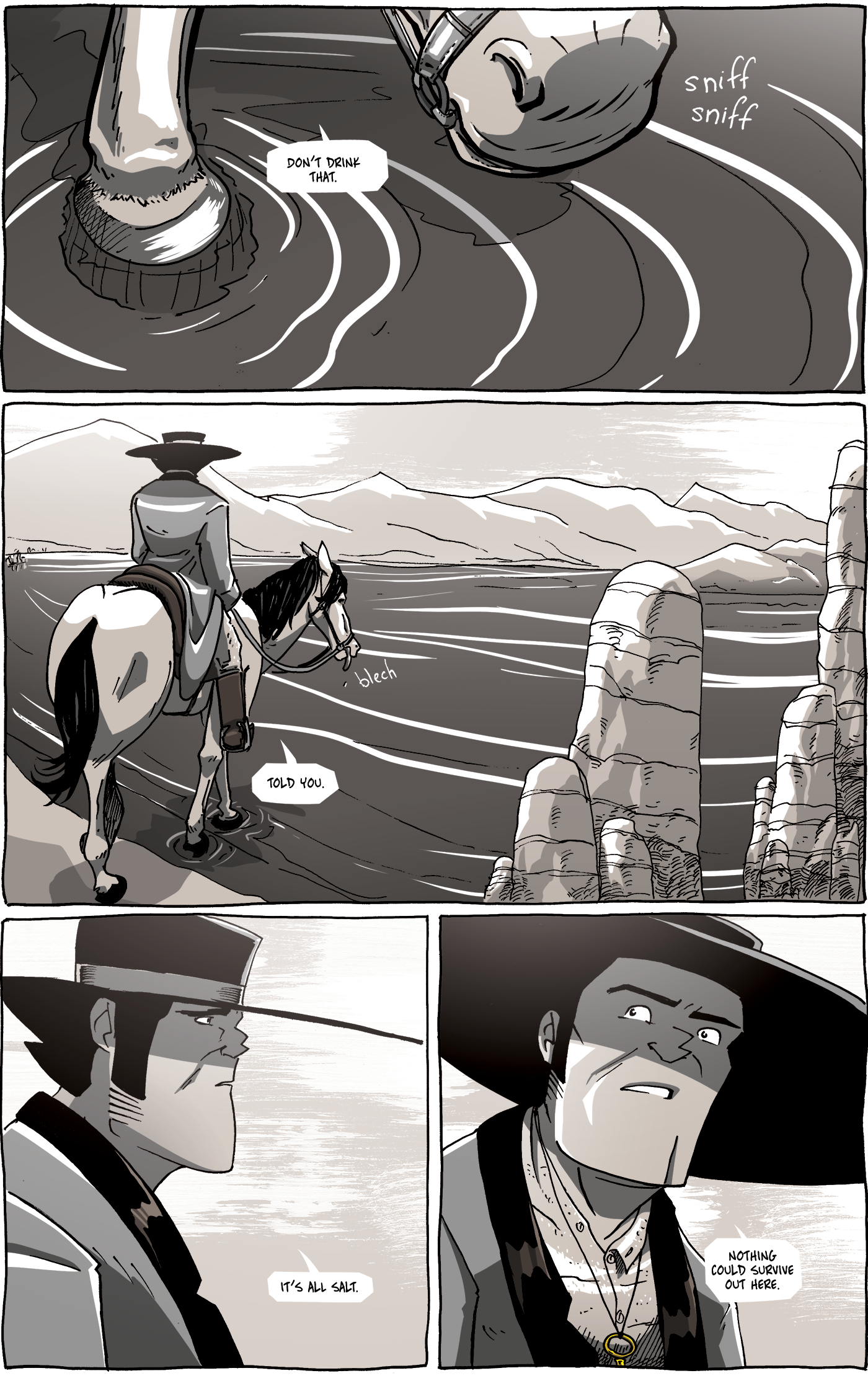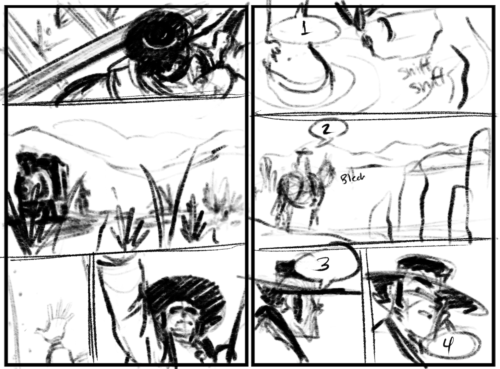Bad Water
The problem with comics––as a comic creator––is that people read comics very fast. I’m not complaining because it’s a natural byproduct of the medium––we are able to consume more information faster in an image than we are with text (hence the “a picture is worth a thousand words” platitude). However, as a creator of comics, there are powerful techniques to help manage the speed of a reader, from text to panel composition. One of these is a montage.
A montage––as these last few pages have been––is an interesting tool in that toolset because it paradoxically covers a large amount of time in a short amount of time. They tend to be used to make the mundane interesting. How important is it to see every practice session between Johnny and Baby as they learn to become literally the most in-sync dance partners ever in Dirty Dancing? Not very. Do we need to see every connecting train, boat, and flight Indiana Jones takes to get from New York to Venice in The Last Crusade? No. The mundane, by definition, is repetitious and uneventful, which is severely boring for a viewer. However, since montages are really about hitting “fast forward” on the mundane things, we can see either growth or progression happen in a noticeable way, especially when differences are highlighted. That’s why we immediately jump from seeing Rocky Balboa punch a slab of frozen meat to carrying a log up a hill; we precisely do not see the twelve other times he did that same exercise, but the difference in exercises is interesting.
With this scene of Long John traveling, it would be boring to show every step he takes and every stop he makes from Bodie to Mono Lake because it’s an empty and quiet stretch of land. The relative lack of dialogue also makes these pages the easier to skim and turn past, making them the pages that the readers will likely spend the least amount of time with. Again, that’s okay! That’s just how comics work! A montage is not a waste of space, it’s a tool being knowingly used for a purpose.
Knowingly, because there is an interesting effect that happens with a montage. While readers may read through these pages quickly, these three silent pages have the alternate effect of slowing down the pace of the story itself, showing the time and distance that has spanned from the previous scene into the next one. Their lack of plot advancement, character growth, and conversation makes it seem like a long time, which is the desired effect. So, even though they are quick to read, these pages also slow down the reader as they read and consider the time it’s taking for Long John to find the Hellrider.
So, to that end, they are not wasted pages in the slightest.




Discussion ¬